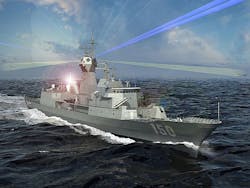Why, you ask? It's really about retiring a tired, dated term like blog. Originally a combination of the words web log, the blog term has run its course. I'm not writing an on-line journal, but rather a weekly commentary of what's important in the aerospace and defense electronics world. Look for the first installment of the Mil & Aero Commentary on Tuesday 5 January.
One other housekeeping announcement: the staff of Military & Aerospace Electronics will be taking time off with our families over the Christmas holidays. We will not be posting new content to the Website from 24 Dec. 2015 through the end of the year. We will resume with new content on Monday 5 Jan. 2016.
There's more to look forward to in 2016. For starters, we're crafting an industry awards program to reward the most important innovations in the military and aerospace electronics industry. We plan to kick off the program this spring, and make our awards sometime this fall. Stay tuned.
The year 2016 promises to be an interesting time, with the global war on terror continuing unabated, shifts to national leadership with the presidential election next fall, and international tensions heightening in the Western Pacific involving the military expansion of China.
An air and naval base is being established by China in the Spratley Islands in the South China Sea between the Philippines and Vietnam, in which U.S. military and government forces believe to be international waters. The U.S. Navy continues military patrols in the area, while China warns dire consequences for continuing to do so.
Related: Two research firms picked for DARPA EW program to counter programmable adaptive radar
On the other side of China, the nation of India is looking to the U.S. to buy sophisticated reconnaissance and attack unmanned aerial vehicles (UAVs) to counter what Indian officials claim are border incursions by China.
With these conditions in place, look to see increased emphasis in 2016 on military technologies like anti-submarine warfare and cooperative sonar; cyber warfare, military UAVs for battlefield and shipboard cargo delivery; adaptive radar and electronic warfare (EW); passive radar and sonar; augmented reality; laser weapons; unmanned underwater vehicle (UUV) motherships able to deploy forces of covert reconnaissance and attack UUVs; developments in persistent surveillance; and advanced data mining to uncover potential terrorist threats in social media.
Anti-submarine warfare will be important to keep Chinese submarine developments in check. China not only is starting to deploy advanced nuclear attack and ballistic missile submarines throughout the world, but also is developing nuclear ballistic missiles designed to destroy U.S. carrier battle groups. Cooperative sonar, meanwhile, involves many different passive sensors working together to pinpoint and track distant targets.
Cyber warfare remains of critical importance as suspect Russian, Chinese, and Iranian computer hackers have gained access to U.S. government agencies, as well as to power grids throughout the U.S. in efforts to probe perceived weaknesses.
UAVs for cargo and shipboard cargo deliver will see increased attention in 2016 as machine autonomy and optionally piloted helicopter and fixed-wing aircraft technology make it feasible to keep forward-deployed troops and sailors supplied without putting human lives at risk.
Related: DARPA considers unmanned submersible mothership designed to deploy UAVs and UUVs
Adaptive radar and adaptive EW technologies are progressing such that digital technologies can be exploited to reprogram radar and EW systems on the fly to adapt to changing conditions. Passive radar and sonar technologies in the future, likewise, will be important for their stealth value. Both technologies will work without transmitting active signals and will rely on advanced digital signal processing.
Augmented reality involves superimposing icons to indicate targets, friendlies, obstacles, and other features on imagery in weapon sights, head-up displays, soldier-worn goggles, and other optical devices. The idea is to blend real-time images with computer graphics to give warfighters an enhanced view of the battlefield.
Laser weapons are poised to take lead roles as fighter aircraft weapons, as well as laser deck guns aboard surface warships. The big advantage to laser weapons -- at least in theory -- is they never run out of ammunition, so long as a power source is available.
Persistent surveillance is as important in the war on terror, as well as for conventional warfare, as it's ever been. The idea is to look at specific areas for long periods of time, filter out what's routine, and focus on things that are out of the ordinary, which could lead to predicting terrorist attacks or other military events.
Data mining technology likely will be brought to bear on social media channels next year to enable U.S. and allied security and military teams to identify potential terrorist suspects based on their social media postings. It could be a big advancement in screening immigrants on their way to the U.S.

